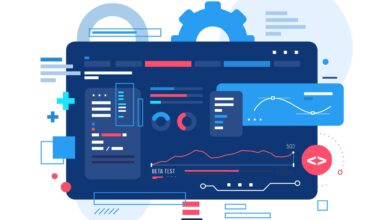The Future of Security Technology: Revolutionizing CCTV Monitoring
Introduction
In an era where technology is rapidly evolving, the security sector is not left behind. With the advent of advanced security technology, the landscape of surveillance has drastically changed, making it more efficient, accurate, and accessible. Among the various facets of security technology, CCTV (Closed-Circuit Television) monitoring stands out as a critical component, ensuring the safety and security of people and assets across different sectors. This blog delves into the advancements in security technology and their impact on CCTV monitoring.
Evolution of CCTV Monitoring
From Analog to Digital
CCTV monitoring has come a long way from its analog roots. Originally, analog cameras were connected to video recorders through coaxial cables, and the footage was stored on tapes. This method had several limitations, including low resolution, limited storage capacity, and the inconvenience of manual tape replacement.
The transition to digital technology marked a significant leap forward. Digital CCTV systems offer higher resolution, improved image quality, and the ability to store vast amounts of data on digital storage devices. Moreover, digital systems facilitate easy access to recorded footage, enabling quick searches and retrieval of specific incidents.
Integration of Advanced Security Technology
Internet Protocol (IP) Cameras
One of the most notable advancements in CCTV monitoring is the adoption of Internet Protocol (IP) cameras. Unlike traditional analog cameras, IP cameras transmit video data over a network, allowing for remote viewing and management. Key benefits of IP cameras include:
- High-Resolution Images: IP cameras provide high-definition (HD) and even ultra-high-definition (UHD) video, ensuring that details are captured with clarity. This is crucial for identifying individuals, vehicles, and other important elements in the footage.
- Scalability: IP camera systems are highly scalable. Adding new cameras to the network is straightforward, making it easy to expand the surveillance coverage as needed.
- Remote Access: Users can access live and recorded footage from anywhere using a computer, smartphone, or tablet. This flexibility is invaluable for businesses with multiple locations or for individuals who need to monitor their property while away.
- Advanced Features: IP cameras come equipped with features such as motion detection, facial recognition, and night vision. These capabilities enhance the effectiveness of CCTV monitoring by providing actionable intelligence.
Enhancements in Video Management Software (VMS)
Centralized Control and Analytics
Video Management Software (VMS) plays a crucial role in modern CCTV monitoring systems. VMS solutions provide a centralized platform for managing multiple cameras, storing video footage, and analyzing data. Some of the key advancements in VMS include:
- Centralized Storage and Management: VMS allows for centralized storage of video data, ensuring that footage from multiple cameras is easily accessible and secure. This centralized approach simplifies the management of large-scale surveillance systems.
- Real-Time Monitoring and Alerts: Advanced VMS solutions offer real-time monitoring capabilities, enabling security personnel to view live feeds and receive alerts for specific events, such as unauthorized access or motion detection. This proactive approach enhances situational awareness and response times.
- Video Analytics: Modern VMS integrates sophisticated video analytics powered by artificial intelligence (AI) and machine learning. These analytics can detect anomalies, recognize patterns, and provide insights into security events. For example, AI-driven analytics can identify suspicious behavior, count people, and detect abandoned objects.
- Integration with Other Systems: VMS can be integrated with other security systems, such as access control, alarms, and building management systems. This integration provides a comprehensive security solution that enhances overall effectiveness.
Impact on Various Sectors
Commercial and Retail
In the commercial and retail sectors, advanced CCTV monitoring systems are essential for ensuring the safety of employees, customers, and assets. Retailers use CCTV to prevent theft, monitor customer behavior, and improve store operations. The integration of video analytics helps in understanding shopper patterns, optimizing store layouts, and enhancing the customer experience.
Healthcare
Hospitals and healthcare facilities rely on CCTV monitoring to safeguard patients, staff, and sensitive areas. IP cameras and VMS provide real-time surveillance of critical areas, such as emergency rooms, pharmacies, and restricted zones. Video analytics can assist in identifying unauthorized access, monitoring patient activity, and ensuring compliance with healthcare regulations.
Education
Educational institutions use CCTV monitoring to ensure the safety of students, staff, and campus property. Advanced security technology helps in monitoring classrooms, hallways, and outdoor areas. Real-time alerts and video analytics enable prompt responses to incidents, enhancing the overall security of the campus environment.
Transportation
In the transportation sector, CCTV monitoring is vital for ensuring the safety of passengers and infrastructure. Airports, train stations, and public transit systems use advanced surveillance systems to monitor passenger flows, detect security threats, and manage emergency situations. IP cameras and VMS provide high-resolution video and real-time monitoring capabilities, essential for maintaining public safety.
Future Trends in Security Technology
Artificial Intelligence and Machine Learning
The integration of artificial intelligence (AI) and machine learning (ML) in CCTV monitoring is set to revolutionize the industry. AI-driven analytics can process vast amounts of video data in real time, providing valuable insights and automating surveillance tasks. Future trends include:
- Predictive Analytics: AI algorithms can predict potential security incidents by analyzing historical data and identifying patterns. This proactive approach allows for preventive measures to be taken before incidents occur.
- Enhanced Facial Recognition: Improvements in facial recognition technology will enable more accurate identification of individuals, even in challenging conditions. This capability is particularly useful for access control and identifying persons of interest.
- Behavioral Analysis: AI can analyze human behavior to detect unusual or suspicious activities. For example, it can identify loitering, abrupt movements, or unauthorized access to restricted areas.
Cloud-Based Solutions
The adoption of cloud-based CCTV monitoring solutions is on the rise. Cloud storage offers several advantages, including scalable storage, remote access, and disaster recovery. Cloud-based VMS solutions enable users to manage and monitor surveillance systems from anywhere, providing greater flexibility and convenience.
Conclusion
The advancements in security technology have significantly transformed CCTV monitoring, making it more efficient, accurate, and accessible. The integration of IP video surveillance and advanced VMS solutions provides comprehensive security coverage, real-time monitoring, and valuable insights through video analytics. As technology continues to evolve, the future of CCTV monitoring will be shaped by AI, machine learning, and cloud-based solutions, ensuring even greater levels of security and operational efficiency.
Embracing these advancements allows businesses and institutions to stay ahead of security threats, protect their assets, and create safer environments for everyone. As we move forward, the synergy between cutting-edge security technology and CCTV monitoring will continue to play a pivotal role in safeguarding our world.


